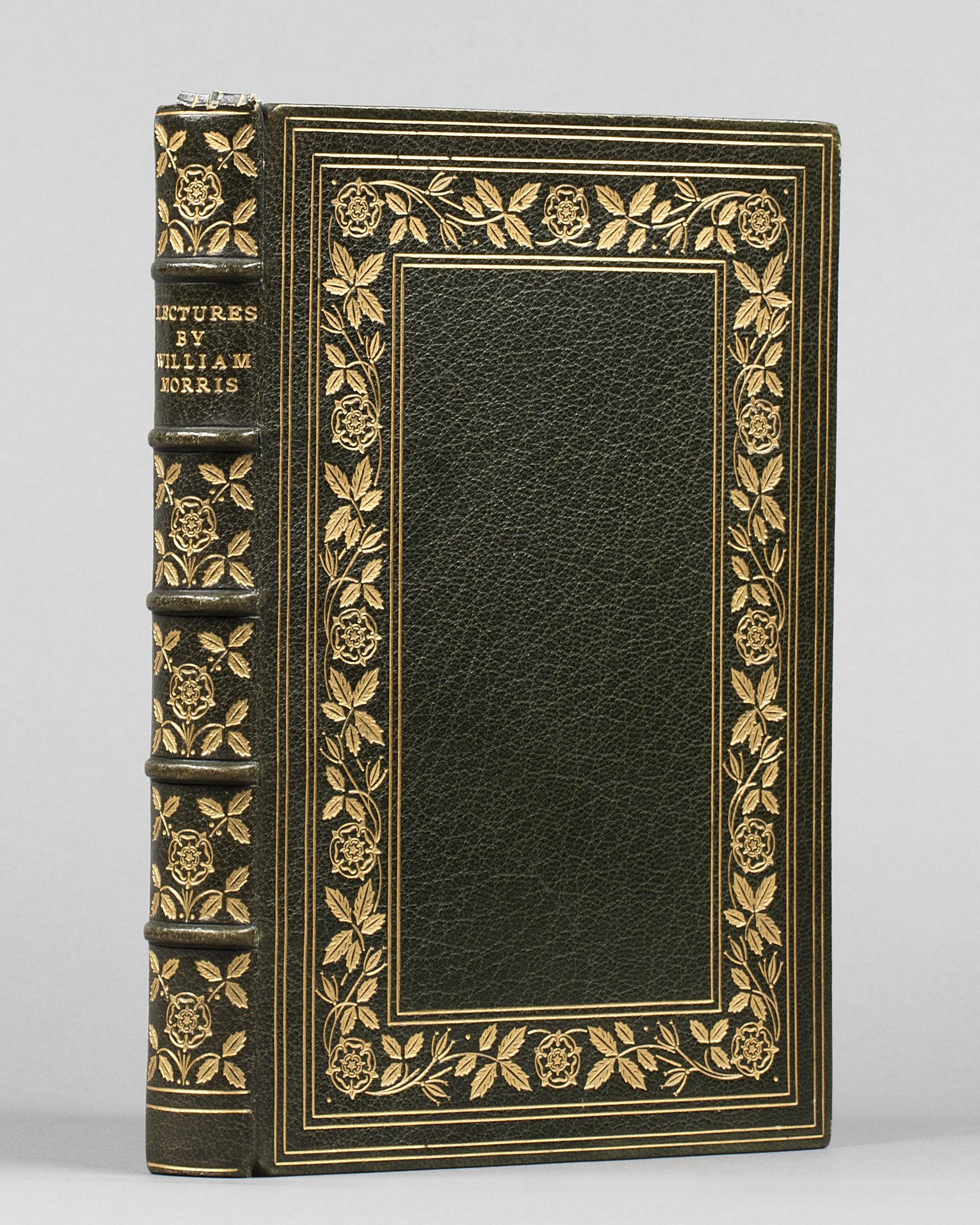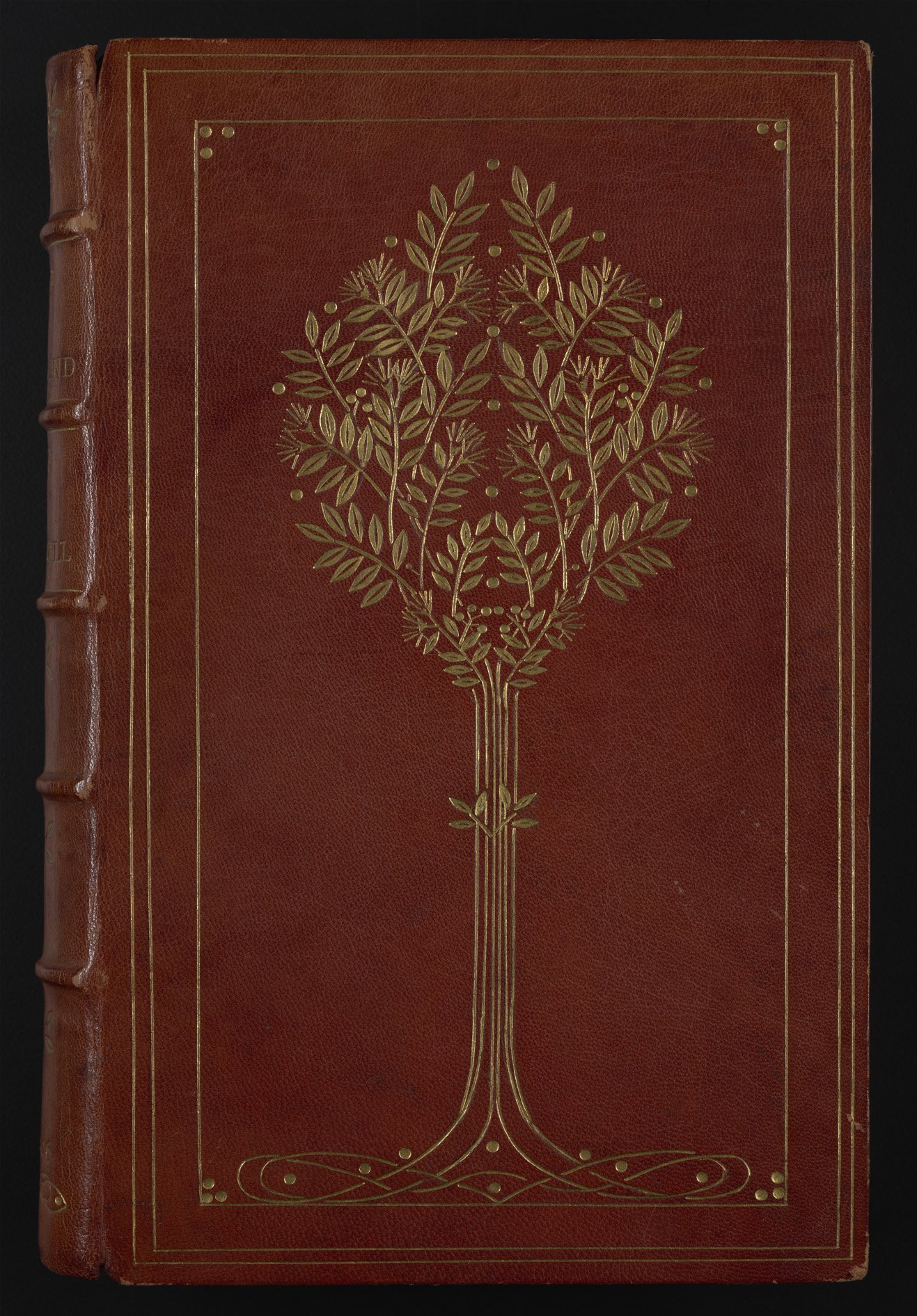Women Binders
Bookbinding is a largely anonymous art, and as it is the product of physical handwork, one might assume that women had little role in it historically. However as is true of printing and other books arts, women have made lasting contributions, and beginning in the nineteenth century, they chose not to remain hidden in the margins. Although many noted women binders of this period learned from master binders such as Douglas Cockerell, Francis Sangorski, George Sutcliffe and others, Sarah Prideaux, for example, wrote extensively about and trained others in the art. The Guild of Women Binders—not a guild in the traditional sense—was a collective of women binders active from 1898 to 1904. The Guild’s aim, informed by the Arts and Crafts movement, was to revive the art and appreciation of handwork and individuality, particularly as counterpoint to the uniformity of machine-made books and bindings. Guild members worked only with fine materials –calf, morocco, vellum—and their bindings are noted for their rich colors, exquisite tooling and patterning. One key aim of the Guild, the lasting influence of which can be seen in this exhibition, was to assure a correspondence between the binding and the subject matter of the book.

Bound by Florence Paget
Florence Paget was a student of the binder Douglas Cockerell and her bindings were exhibited at the Arts and Crafts Exhibition Society in 1899 and 1900. Paget received acclaim for her work and was chosen to bind the Form of Order and Service that King Edward VII carried at his coronation in 1902. That book is now in the Royal Collection Trust, inventory no. 1080420.

Bound by Eleanor Joachim
Mary Eleanor Joachim was a student of Sangorski and Sutcliffe’s, the authors of the binding for Charles Dickens’s A Christmas Carol, featured at left. Although Joachim was born in England, her parents emigrated to New Zealand when she was two years old. Joachim’s feelings about her home country might be inferred from this lovely binding, one of three she has been known to have done for the text, one of which, according to the book historian Marianne Tidcomb, was presented to Queen Alexandra.
